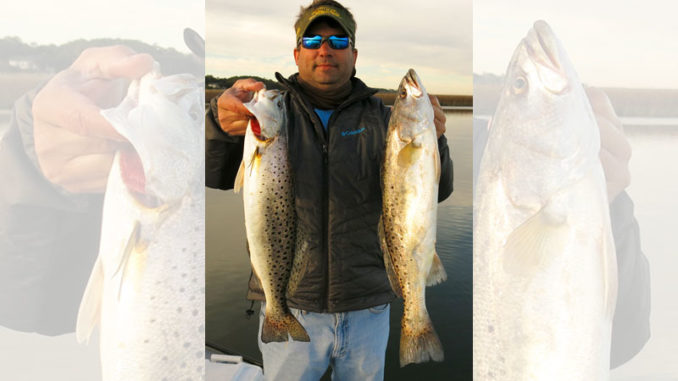
Float a shrimp for great December specks
Just before Christmas, when the inshore water temperatures plummet towards seasonal lows, many anglers are ready to throw in the towel. But they don’t have to.
The rock jetties that armor many of the inlets along the South Carolina coastline will support a healthy population of big, fat speckled trout that are suckers for a live shrimp fished under a slip cork. And the jetties protecting Murrells Inlet are famed for holding big specks during the last month of the year.
Murrells Inlet is not a big estuary, by any means. But it can pack a big punch. It is predominantly a saltwater estuary with very little freshwater input. As the cold fronts streamroll into the area, trout increase their feeding as much as possible.
Artificial lures and live bait will trigger a feeding frenzy without too much trouble. But for anglers looking for trout on the larger end of the spectrum, the rock jetties just may be the best place to spend a winter day.
Guide Alex Hrycak at Marlin Quay Marina concentrates on the jetties for big trout this month.
Hit the jetties for the bigger fish
“December is prime time to float live shrimp at the jetties,” said Hrycak (843-651-4444). “The jetties tend get a lot of big fish stacked up on the rocks this time of year, where you get smaller schooling fish between 12 to 14 inches inside the creeks of the estuary.”
Hrycak may hit Oaks or Garden City creeks. But the jetties will be his primary destination. Who wants to catch schoolies when gators are a short drive away?
Typically, big trout spend more time in the ocean than the estuaries. This makes the jetties perfect places to trap bait and offer a feeding opportunity for trout and other predators.
Hrycak likes to fish the jetties on the lower end of the tide.
“On low tide, less water is going through the rocks. So the bait is pulled out to the edges,” he said.
Rock jetties cover a much larger area than they appear to. Even on low portions of the tide cycle, rocks extend much further into the water.
“Rocks are scattered 15 feet (past what you can see), and that is exactly where we like to drift shrimp to catch big trout,” he said.
Since the water is still 10 to 12 feet deep along the rock fringe, Hrycak will use a slip cork and bobber stopper to sink shrimp down midway of the water column.

